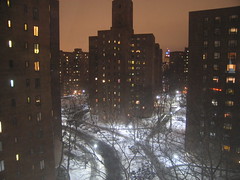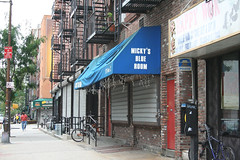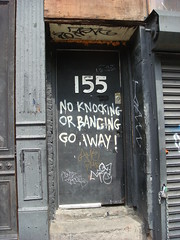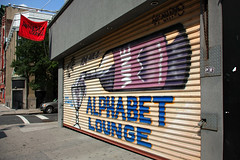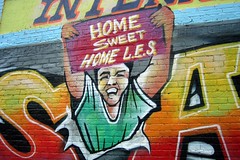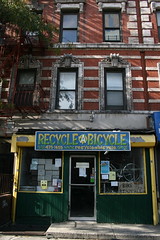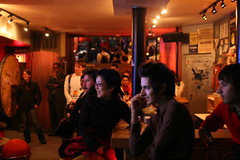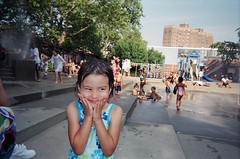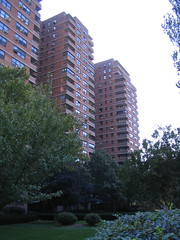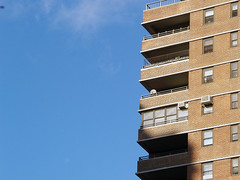East:
Abrons Arts Center
466 (block):
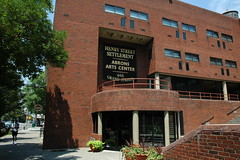
This arc-shaped complex was built in 1975
to provide the community with art facilities,
including spaces for dance, music, drama
and visual arts. Lo-Yi Chan was the chief
architect on the project.
The center was built around the
Harry De Jur Playhouse, established in
1915 as the Grand Street Playhouse
and later known as the Neighborhood
Playhouse. Founded by sisters Alice
and Irene Lewisohn, who directed community
drama clubs for the Henry Street Settlement,
the theater was designed by Harry C. Ingalls
and F. Burral Hoffman Jr., who based the
Colonial Revival plan on their own Little
Theatre (now the Helen Hayes) on 44th Street,
which went up in 1912.

The theater showcased experimental
drama and featured new work by Eugene O'Neill,
George Bernard Shaw and James Joyce; Stravinsky's
Petrouchka, a ballet with life-sized puppets,
had its U.S. debut here in 1916. After the
Neighborhood Playhouse moved out of the
neighborhood (to the Little Theatre, its
original home's architectural model), serious
drama continued here, notably Aaron Copeland's
opera The Second Hurricane, which
premiered here in 1938 in a production
directed by Orson Welles and starring Eartha Kitt.
The Folksbiene Yiddish theater company also
got its start here.
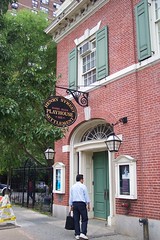
This stage has featured the likes of
James Cagney, Ethel Barrymore, Isadora
Duncan, Martha Graham, Count Basie and
Dizzy Gillespie.
Aline Bernstein, a
founder of the Met's Costume Institute,
began her career in costumes here--and
began her eight-year affair with novelist
Thomas Wolfe on a couch backstage.
|


